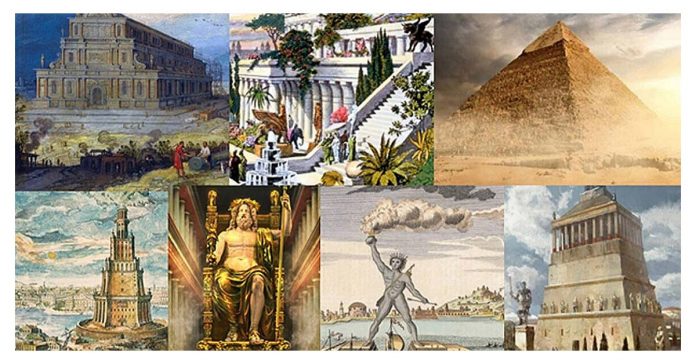If you think the current seven wonders of the world were always on the list, then it’s wrong. Ancient and historic wonders have different stories.
The ancient Wonders of the world depicts the sheer hard work and capabilities of humans. The ancient wonders of the world depict how genius and evolving humans are, but at the same time, it displays the human tendency to destruction, disagreement, and embellishment.
These ancient wonders are destroyed but continue to be the inspiration for much remarkable creativity and skill.
Here is the list of ancient Wonders known to the world:
The great pyramid of Giza
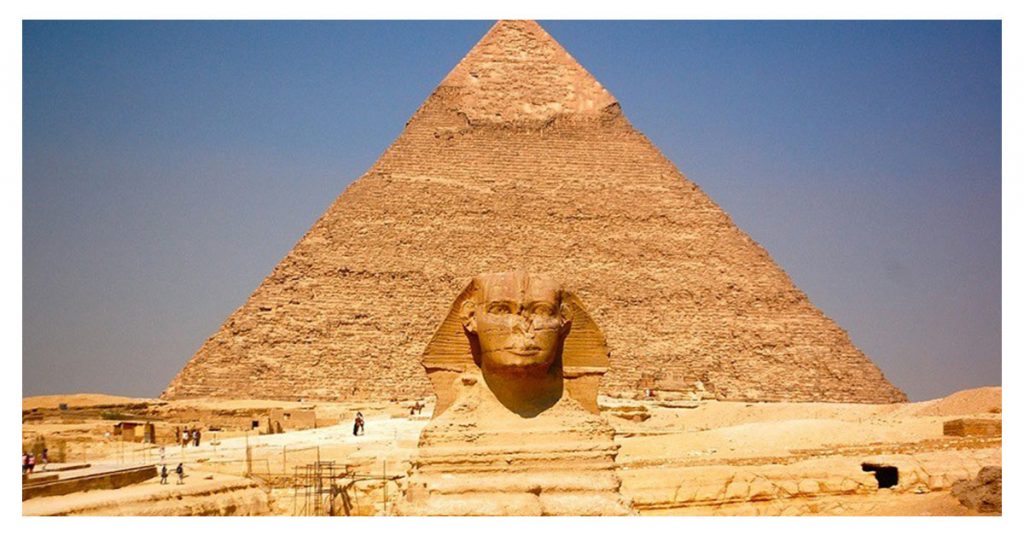
The only wonder of the ancient world that has survived till date located at Gaza, on the bank of the Nile River north of Cairo in Egypt, was Built between 2700 B.C and 2500 B.C; the pyramid is part of three pyramids called as royal tombs; Khafra ( Chephren), Khufu( Cheops), and Menkaura (Mycerimus). The largest part out of three is Khufu, also referred to as The Great Pyramid, which covers 13 acres. The pyramid is believed to have 2 million tons each, weighing from 2 to 30 tons each. For more than 4000 years, Khufu was known as the world’s largest structure; later in the 19th century, the modern tallest structures emerged. The sloped walls of the pyramid were intended to depict the rays of Sun God, Ra. The inside of the Pyramid consists of narrow corridors and several hidden chambers. Modern archaeologists have found great treasures in the pyramid, but it’s believed that once it contained huge trusses that were looted within 250 years of its completion.
Hanging Gardens of Babylon
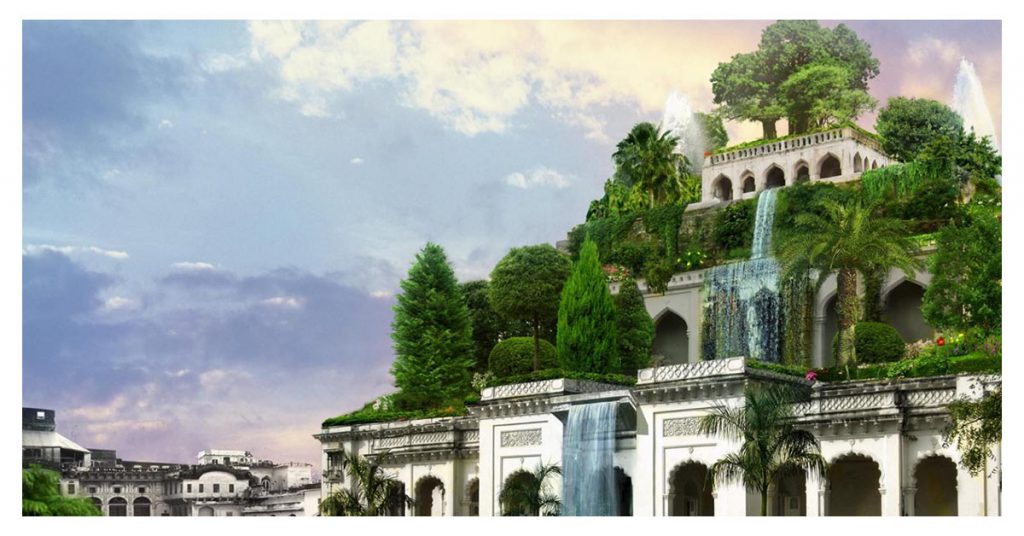
The Hanging Gardens of Babylon was built Near the Euphrates River in modern-day Iraq around 600 B.c. by the Babylonian king Nebuchadnezzar II according to ancient Greek poets and authors. The king built the towering gardens to ease the homesickness of his lover Amytis about nature. The garden is believed to have been planted 75 feet high on the huge terrace in the form of steps. Later several writers described how people used to walk underneath the gardens. However, there are multiple gardens in both Roman and Greek literature; none of their existence has been found in Babylonian inscriptions. Therefore, modern scholars believe that the park was nothing but an inspired and fictional tale.
Temples of Artemis
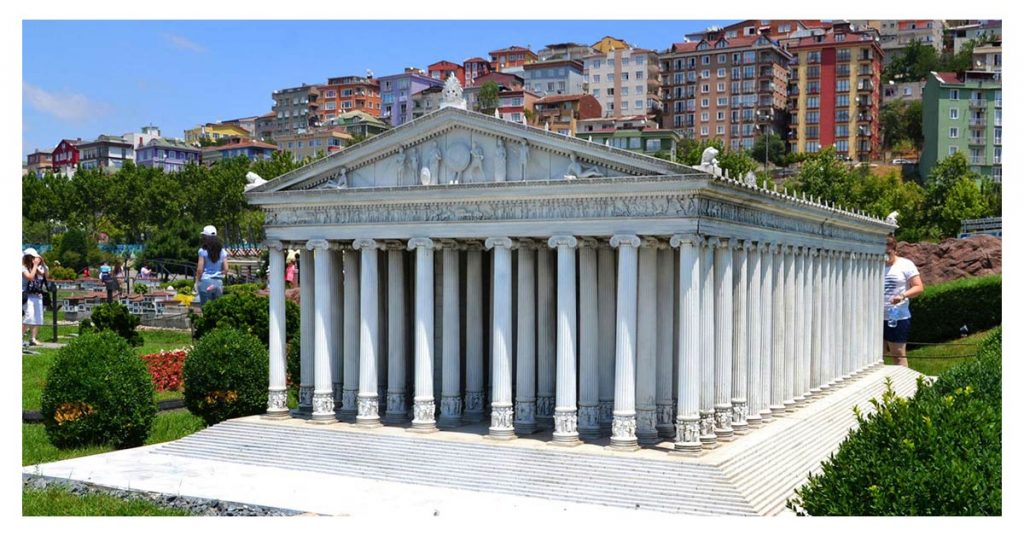
There were a series of temples destroyed and restored in the same place in a Greek port city on the west side of modern Turkey, Ephesus. The most stunning and display of hard work and capability were two marble temples built during 550 B.C. and 350 B.C., originally built by Cretan Architect Chersiphron and his sons. The temple was decorated by the most popular artists around the ancient world. The building was burned by Greek citizen Herostratus on July 21, 356 B.C., who was put to death and declared illegal to take his name. It’s said that when the building burned, the same night Alexander the Great was born. About six years later, temples were again built and then destroyed in 262 A.D.
Statue of Zeus
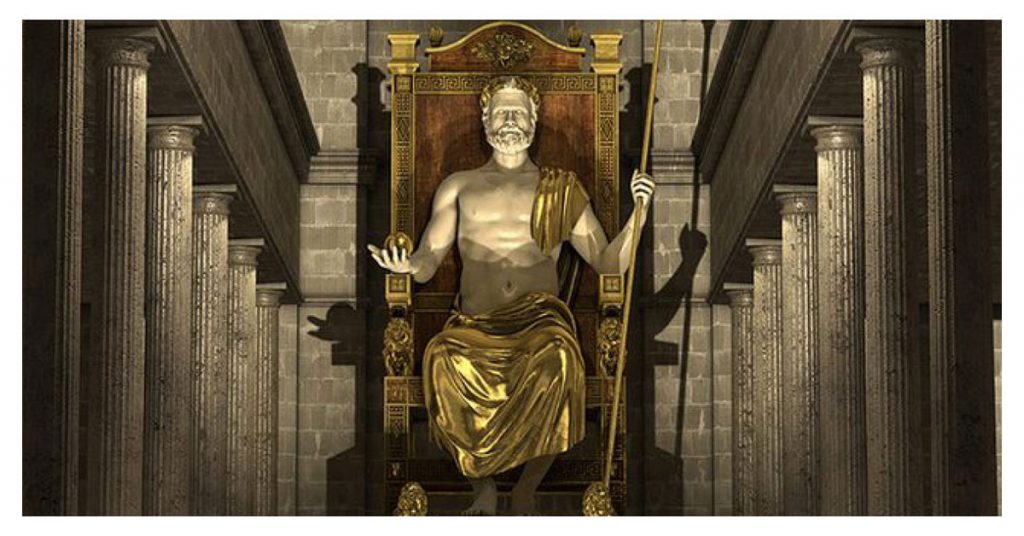
The Popular statue of King of God in Greek mythology was created by Athenian Sculptor Phidias and placed at Olympia in the temple of Zeus. The sculpture portrayed the god of thunder bare-chested seated at a wooden throne. The statue was decorated with ivory and gold. The 40 feet statue almost touched the temple top. According to legend, it’s believed that after finishing the statue, the sculptor Athenian asked the approval of Zeus, and soon after, the temple was struck by lightning. Zeus stayed eight centuries in the temple at Olympia.
Mausoleum at Halicarnassus
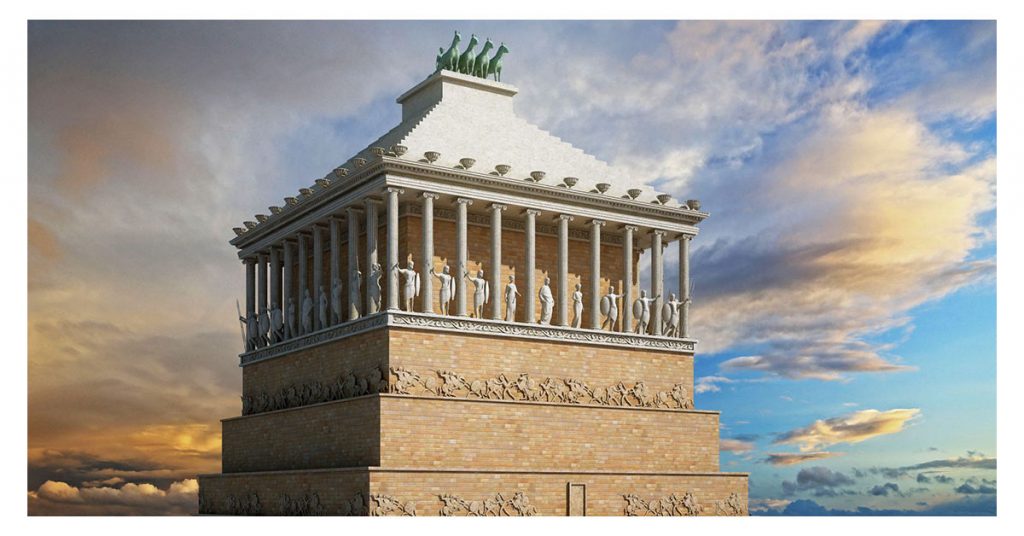
The Mausoleum at Halicarnassus was a tomb located in modern-day Southeastern turkey by Artemisia for her husband after his death in 353 B.C. her husband, Mausolus, was the king of Carnia in Asia manor was also her brother. According to legends, she was grief-stricken after his death; she drank water mixed with his ashes and ordered the construction of the Mausoleum at Halicarnassus. It was 135 feet high and was made of white marble. The building had a complicated design with three rectangular layers, which might have attempted to reconcile Egyptian, Greek, Lucian architectural styles. The first layer consisted of 60-foot base steps and the second layer had 36 Ionic columns, a stepped and pyramid snapped roof followed by the third layer with the tomb and 20-feet donation of a four-horse chariot. The Mausoleum at Halicarnassus was destroyed in an earthquake in the 13th century.
Colossus of Rhodes
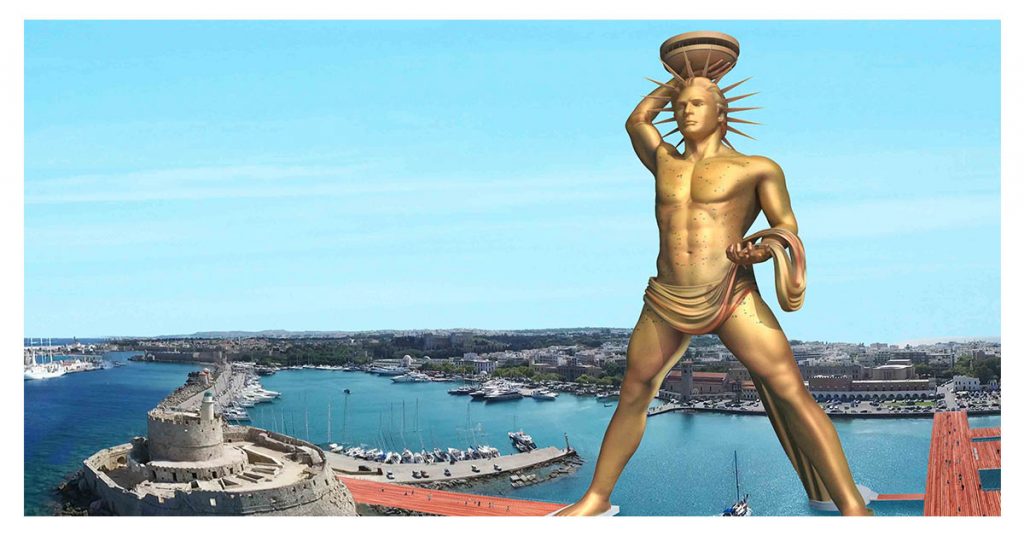
Colossus of Rhodes is a large bronze sculpture of Sun God Helios built in the 3rd century B.C. by Rhodians over 12 years. The statue was the tallest in the world, with a height of 100 feet. According to legends, it’s believed that Rhodians sold their tools left behind by the Macedonians to pay Colossus. The bronze sculpture stood for 60 years and was destroyed in an earthquake and was never rebuilt.
Lighthouse of Alexandra
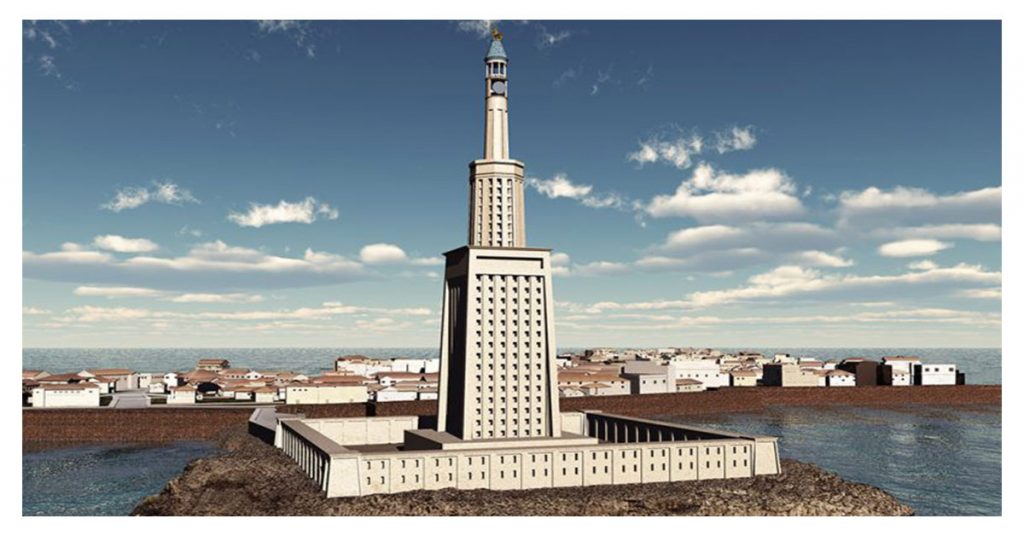
It was located near the city of Alexandria on a small island called Pharos. Built during the reign of Ptolemy II was completed around 270 B.C. and designed by the Greek architect Sostratos. The lighthouse was used to guide the Nile River ships in and out of the city. The lighthouse had three-tiered structures with the square-shaped level at the bottom, octagonal in the middle, and Cylindrical at the top. The statue stood above these tires, most probably of Great Alexzandra or Ptolemy II, 16 feet tall. Later it was destroyed due to the earthquake.


